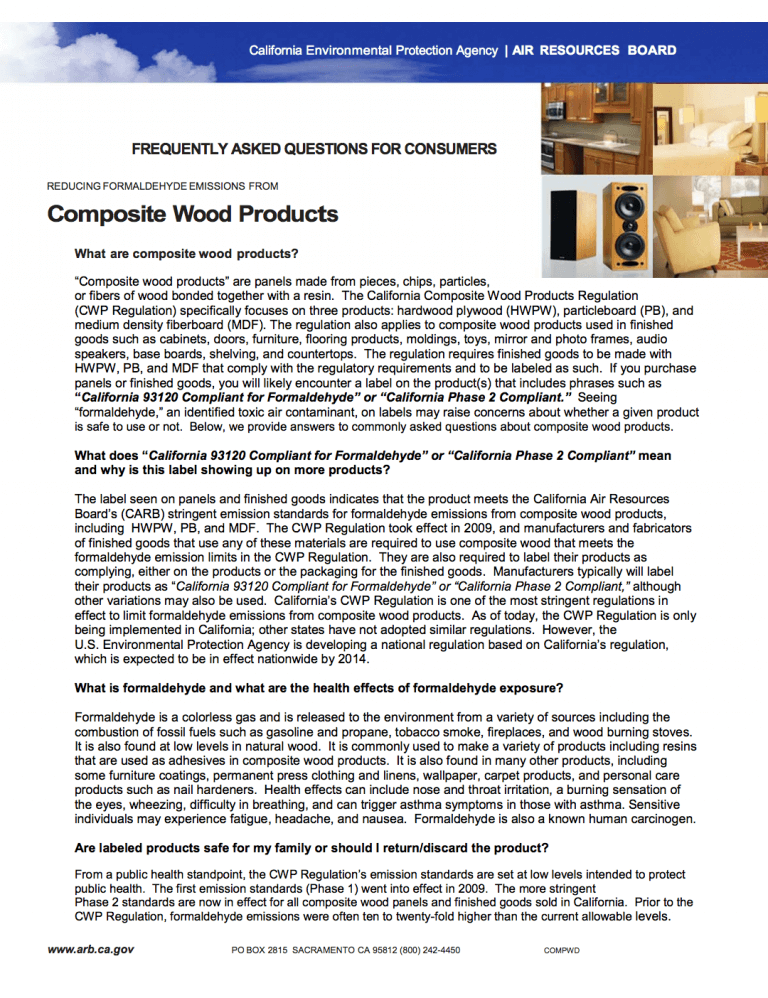What is CARB2 and Why Does it Matter For your Flooring

There are many industry terms used to refer to features and environmental characteristics for flooring in the market today. Among these terms is the phrase “CARB2”. This is a phrase that carries a lot of weight in the market because it refers to a quality of flooring that meets some of most stringent standards in the world.
California Air Resources Board’s (CARB) Phase 2
A standard for formaldehyde emissions from composite wood products, including hardwood plywood (HWPW), particleboard (PB), and medium density fiberboard (MDF).
The intention of CARB2 compliance is to set standards for products that could impact the indoor air health quality of any interior spaces. The specific substance that CARB2 intends to control is formaldehyde.
This colorless gas is a known carcinogen and is linked with an increased risk of cancer in humans. While almost everything contains some trace levels of formaldehyde, products like flooring need to be manufactured in such a way as to minimize the amount to a safe level. In the case of other non flooring products, consumers can look for products that are CARB2 compliant and/or are labeled as “no-added formaldehyde” (NAF) and “ultra-low emitting formaldehyde-based resins” (ULEF).
Consumers should be mindful of the CARB2 compliance standards if they are considering “composite” flooring products; this includes wide plank engineered flooring, laminate flooring, and other styles of floating flooring which are made of multiple layers of wood.
Keep in mind that CARB2 does not really apply to solid wood flooring and formaldehyde may appear naturally in solid wood. Check out the Consumer FAQ’s from the California Environmental Protection Agency, Air Resource Board Below for more information.
It was not long ago that composite flooring was making headlines because low quality flooring was sold with no regard to CARB2 compliance and the detrimental health effects that ensued. High levels of formaldehyde can have a dramatic effect on indoor air health, and in turn, the health of the inhabitants. Although the odors may diminish over time it does not lessen the effects and potential health risks.
Emissions from formaldehyde will decrease as a product ages, so indoor exposure will diminish over time. Common exposure symptoms can include watery eyes, sore throat, nausea, and in extreme cases, breathing difficulties. Extreme heat and humidity can increase formaldehyde emissions, so if these symptoms persist, increase ventilation and maintain building temperature and humidity levels within moderate conditions.

Endless Inspiration for the Floor of Your Dreams
GET DESIGN BOOKBased on the information above you can see how important it is to find flooring that complies with CARB2 regulations. So how can you do that? It is a lot easier than you might think.
Flooring manufacturers, are investing in manufacturing practices, products and finishes that comply with CARB2. But reducing formaldehyde emission isn’t the only benefit. In the case of Torlys, you can expect:
- Prefinished floating flooring so no harmful odors caused by onsite finishing
- Floating floor that require no chemical glues for installation
- Torlys Smart Floors contain no harmful VOC’s (volatile organic compounds)
Almost all composite flooring sold today is manufactured outside North America, where it can be challenging to monitor and regulate the manufacturing practices, but by establishing compliance standards, it will hold manufacturers, and their retail partners, more accountable to deliver a safe product to its consumers.
Choosing new flooring is a big decision, but don’t choose a floor that is going to harm your home or client, and cause health issues down the road.





